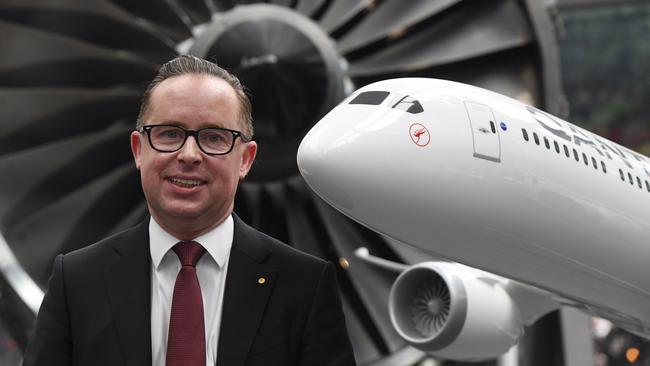Qantas Group Pilot Academy to train up to 500 a year
Qantas expects its planned new pilot training academy will become one of the biggest in the southern hemisphere.

Qantas expects its planned new pilot training academy will become one of the biggest in the southern hemisphere.
Announcing the plan to set up a Qantas Group Pilot Academy from 2019, Qantas chief executive Alan Joyce said the marquee Australian carrier would hold talks with federal, state and territory governments about the academy, which is likely to be established near an existing regional airfield with uncongested airspace.
Mr Joyce said Qantas was looking to see what facilities were already in place.
“We will obviously need a functional regional airport that we can use,” Mr Joyce said. “We will need accommodation facilities, we will need training facilities.”
Qantas will tip an initial investment of up to $20 million into the new facility, with Mr Joyce saying yesterday “that will potentially grow over time if we grow the school”. He said: “It’s something we think we want to give a fair shake to every single state and territory to give them the opportunity of having this. We think that’s a fair process for the entire country.”
He said there was the potential to train pilots elsewhere in the region given estimates by US aerospace giant Boeing that 640,000 more pilots would be needed in the next 20 years, with 40 per cent in the Asia-Pacific region.
“We have a lot of partners that we’ll continue to talk to and if they want to avail of this facility in the long run, we would be happy to do that, obviously on the right commercial terms,” Mr Joyce said. “That’s why we think the potential could be up to 500 pilots a year, which would make it one of the biggest if not the biggest school in the southern hemisphere.”
Mr Joyce made the announcement while posting a record underlying profit for the first half of the 2017-18 financial year of $976 million.
Asked about the 2011 industrial dispute that led to the fleet’s grounding, Mr Joyce said the financial success of companies such as Qantas “should see all stakeholders doing well”.
The academy plan is initially to train about 100 pilots a year to be employed by Qantas, including the no-frills arm Jetstar and QantasLink, which serves regional destinations. At the moment, Qantas gets its pilots from a mix of graduates from existing flying schools, from general aviation, the military and other carriers.
The carrier plans on partnering with an existing training provider on the move.
The development comes amid concerns about foreign airlines poaching Australian pilots and a regional pilot shortage. The government has opened up two-year work visas for foreign pilots.
Last year’s report into the general aviation sector raised concern about the cost of pilot training and said that flight training activities had experienced “significant decreases” since 2010.
This has the potential to ripple through the aviation sector because during previous shortages airlines have recruited from regional carriers or the defence forces, while the regionals have in turn recruited from the general aviation sector.
Qantas, amid debate about a developing national shortage, has maintained that it has no difficulty attracting pilots, but has previously conceded “pilot issues” had played a role in some cancellations.
Last week, the International Civil Aviation Organisation said that, globally, hundreds of thousands of pilots would be needed.



To join the conversation, please log in. Don't have an account? Register
Join the conversation, you are commenting as Logout